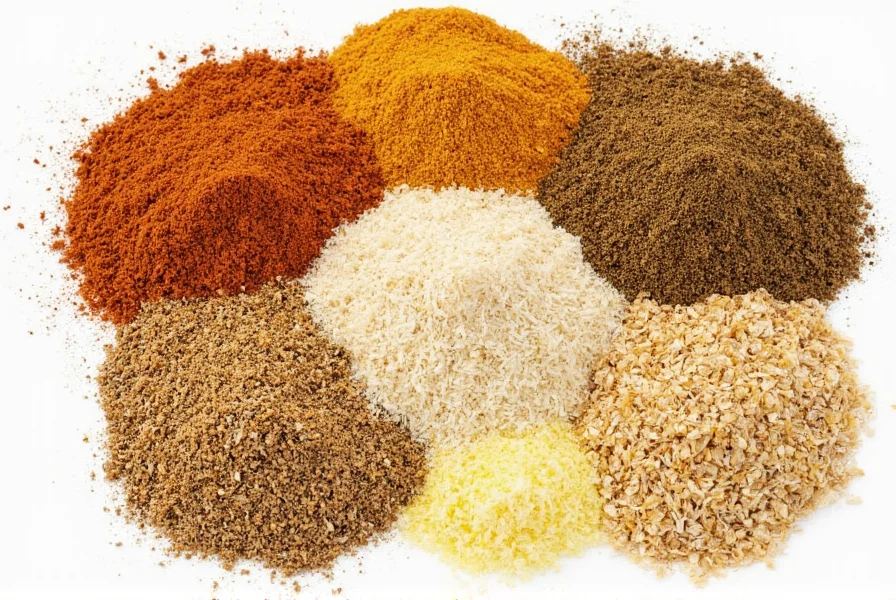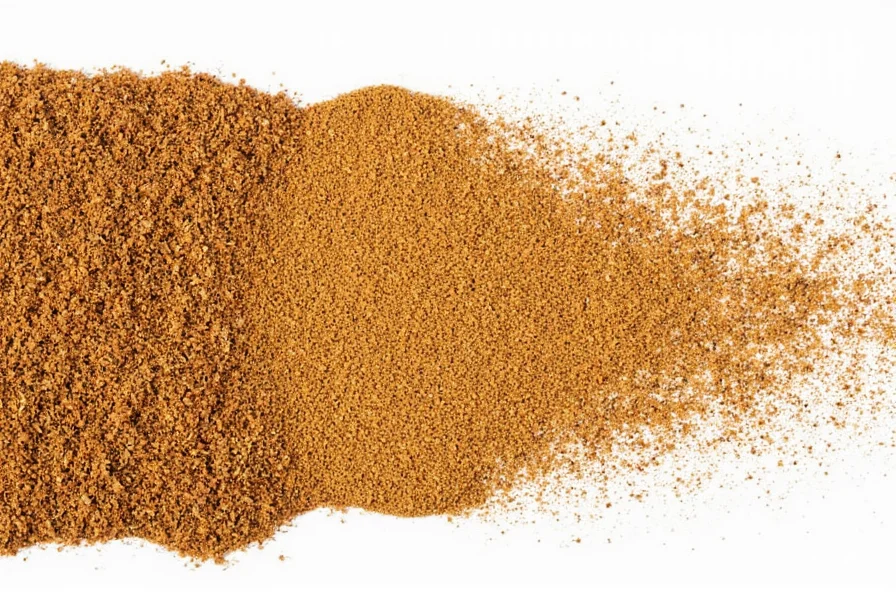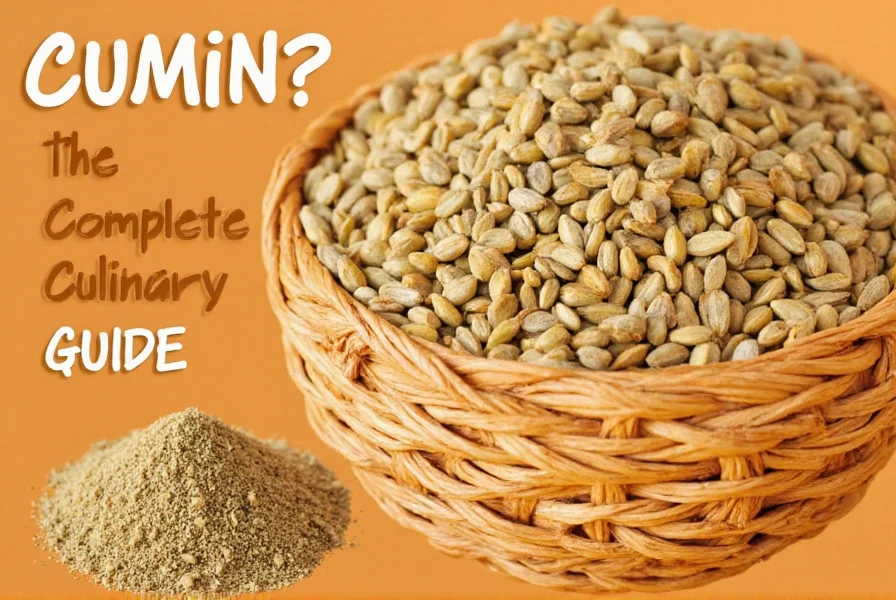When exploring is cumin spice a legitimate culinary ingredient, the answer is unequivocally yes. This ancient seasoning has played a vital role in global cooking traditions since ancient Egyptian times, appearing in recipes from Indian curries to Mexican chili and Middle Eastern falafel. Understanding what makes cumin a true spice requires examining its botanical origins, historical significance, and culinary applications.
What Exactly Is Cumin Spice?
Cumin (Cuminum cyminum) is a flowering plant in the Apiaceae family, native to the Eastern Mediterranean region and South Asia. The spice itself comes from the plant's dried seeds, which are harvested when the fruit ripens and turns brown. Each seed measures approximately 3-6 mm long and has a distinctive elongated shape with nine ridges.
Unlike herbs, which come from the leafy parts of plants, spices like cumin originate from seeds, roots, bark, or flowers. This botanical distinction confirms cumin's classification as a true spice rather than an herb. The seeds contain essential oils that provide cumin's characteristic aroma and flavor profile—earthy, warm, slightly bitter, and peppery with citrus notes.

Historical Journey of Cumin as a Spice
Cumin's history as a valued spice stretches back millennia. Archaeological evidence shows cumin seeds in Syrian excavations dating to the second millennium BCE. Ancient Egyptians used cumin both as a spice and for embalming purposes. The spice appears in the Bible (Matthew 23:23) where Jesus references tithing on cumin, indicating its economic importance in first-century Judea.
During the Roman Empire, cumin was so valuable that soldiers carried it with them. In medieval Europe, cumin became associated with fidelity—soldiers received cumin bread before departing for war, and brides included it in their bouquets. Understanding what is cumin spice historically reveals why it was once worth its weight in gold in certain regions.
Culinary Applications of Cumin Worldwide
Cumin's versatility explains its enduring popularity across global cuisines. Different cultures have developed unique approaches to using this essential spice:
| Region | Signature Dishes | Usage Notes |
|---|---|---|
| Mexico | Tacos, chili con carne, mole | Often toasted and ground with other spices for complex flavor profiles |
| India | Curry powders, garam masala, dal | Frequently tempered in hot oil at the beginning of cooking |
| Middle East | Hummus, falafel, za'atar blends | Used both whole and ground in traditional spice mixes |
| Morocco | Tagines, harira soup | Combined with cinnamon and ginger for distinctive flavor profiles |
Nutritional Profile and Potential Health Benefits
Beyond its culinary value, cumin offers notable nutritional content. One teaspoon (2.1g) of ground cumin contains:
- Calories: 8
- Iron: 1.4mg (8% of daily value)
- Manganese: 0.2mg (9% of daily value)
- Calcium: 23mg (2% of daily value)
- Dietary fiber: 0.6g
Research suggests potential health benefits associated with regular cumin consumption, including improved digestion, blood sugar regulation, and antioxidant properties. When considering is cumin spice good for you, current evidence indicates moderate culinary use contributes positively to a balanced diet, though therapeutic claims require more scientific validation.
Maximizing Flavor: How to Use Cumin Effectively
To get the most from cumin in your cooking, understanding proper usage techniques is essential. Many home cooks wonder how to use cumin spice to achieve restaurant-quality results. Here are professional recommendations:
- Toasting whole seeds: Heat cumin seeds in a dry skillet over medium heat for 1-2 minutes until fragrant. This process enhances the essential oils and creates a more complex flavor profile.
- Grinding fresh: For maximum flavor impact, grind toasted seeds just before use. Pre-ground cumin loses potency relatively quickly.
- Bloom in oil: Adding ground cumin to hot oil at the beginning of cooking (common in Indian cuisine) helps distribute flavor evenly throughout the dish.
- Balancing flavors: Cumin's earthiness pairs well with acidic ingredients like tomatoes or citrus, which help balance its intensity.

Proper Storage for Long-Lasting Freshness
Preserving cumin's flavor requires proper storage techniques. Whole cumin seeds maintain their potency for 3-4 years when stored correctly, while ground cumin typically remains fresh for 6-12 months. For optimal preservation of cumin spice shelf life:
- Store in airtight containers away from light and heat
- Keep in a cool, dark pantry rather than near the stove
- Consider refrigerating ground cumin in humid climates
- Freeze whole seeds for extended storage without significant flavor loss
A simple freshness test: rub a small amount between your fingers and smell. Fresh cumin should release a strong, warm aroma. If the scent is faint or musty, it's time to replace your supply.
Common Substitutes When Cumin Isn't Available
When you're asking what can I use instead of cumin spice, several alternatives can provide similar flavor profiles, though none perfectly replicate cumin's unique characteristics:
- Caraway seeds: Share similar earthy notes but with more anise flavor
- Coriander: Milder and citrusy, often used alongside cumin in blends
- Fennel seeds: Sweeter profile but similar texture when whole
- Garam masala: Contains cumin among other spices for complex flavor
- Paprika + oregano: Creates a reasonable approximation in some dishes
For the most authentic results, especially in traditional recipes, nothing truly replaces genuine cumin. However, these substitutes can help when you're temporarily out of this essential spice.
Debunking Common Cumin Myths
Several misconceptions surround cumin that deserve clarification. When researching is cumin spice healthy, it's important to separate fact from fiction:
- Myth: Cumin causes digestive issues
Fact: Cumin traditionally aids digestion and is used in many cultures to relieve bloating - Myth: All cumin tastes bitter
Fact: Properly toasted cumin has warm, nutty notes; bitterness comes from burning - Myth: Cumin and caraway are the same
Fact: While related, they have distinct flavor profiles and botanical classifications - Myth: Cumin loses all nutritional value when cooked
Fact: Many beneficial compounds remain stable through cooking processes











 浙公网安备
33010002000092号
浙公网安备
33010002000092号 浙B2-20120091-4
浙B2-20120091-4